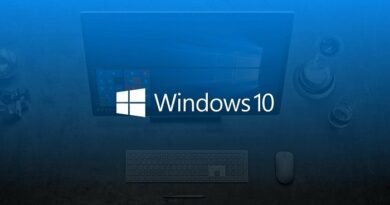4 Methods to Rotate Your Screen in Windows 11 and Windows 10
Table of Contents
In the digital age, the flexibility to customize our digital workspace is more than a luxury—it’s necessary. Whether you’re a professional graphic designer, a coder, or simply someone who enjoys the optimal use of their digital environment, knowing how to rotate your screen in Windows can significantly enhance your computing experience. This comprehensive guide will walk you through various methods to rotate your screen in Windows 11 and Windows 10, ensuring you can adjust your display to meet your needs effortlessly.
Rotating Your Screen Using Display Settings
One of the most straightforward methods to adjust the orientation of your screen is through the Display Settings. This method is universally applicable in both Windows 11 and Windows 10 and requires only a few clicks:
- Access Display Settings: Right-click on an empty area of your desktop. Select “Display settings” from the context menu.
- Adjust Display Orientation: Look for the “Display orientation” dropdown menu in the Display settings window. You have the option to select from Landscape, Portrait, Landscape (flipped), or Portrait (flipped) based on your requirements.

- Apply and Keep Changes: After selecting your desired screen orientation, you’ll be prompted to confirm the change. Select “Keep changes” to apply the new orientation.
Utilizing Keyboard Shortcuts for Screen Rotation
For those who prefer quick keyboard shortcuts, Windows 10 offers a seamless way to rotate the screen:
- Ctrl + Alt + Right Arrow: Rotates the screen to the right.
- Ctrl + Alt + Left Arrow: Rotates the screen to the left.
- Ctrl + Alt + Down Arrow: Inverts the screen upside down.
- Ctrl + Alt + Up Arrow: Returns the screen to its original orientation.
It’s important to note that these shortcuts may not be enabled by default in Windows 11. However, users can leverage third-party applications such as “Screen Rotate” to reintroduce this functionality.
Rotating Screen Through Graphics Options
In some instances, particularly for users with specific graphics hardware, the option to rotate the screen might be available directly through the Graphics Options:
- Access Graphics Options: Right-click on a space on your desktop and select “Graphics Options,” followed by “Rotation.”
- Choose Your Orientation: Select your desired rotation option. Opting for “Normal” will return your screen to its standard orientation.

Employing Graphics Settings for Screen Rotation
Another method to consider, especially for users who cannot find a direct rotation option in their system settings, involves using the graphics driver’s control panel:
- Open Graphics Settings: Right-click on the desktop and select “Graphics Settings” or a similar option, depending on your graphics hardware.
- Adjust Rotation Settings: In the graphics control panel, navigate to the General Settings tab and choose your preferred rotation value from the available options.

Ensuring Optimal Display Configuration
Adjusting your screen’s orientation can greatly enhance your productivity and comfort. Whether you’re reading an e-book, working on a vertical monitor, or correcting an accidentally inverted screen, these methods provide the flexibility needed to tailor your digital workspace to your preferences.
Moreover, for professionals in programming, graphic design, or data analysis, rotating the screen can lead to a more efficient workspace setup, allowing for better viewing angles and more effective use of screen real estate.
How can I rotate my computer screen using Display Settings in Windows 11?
To rotate your computer screen in Windows 11 using Display Settings, right-click on an empty space on your desktop and select “Display settings.” Then, find the “Display orientation” dropdown menu and choose from Landscape, Portrait, Landscape (flipped), or Portrait (flipped) according to your preference. Click “Keep changes” when prompted to apply the new orientation.
Are there keyboard shortcuts to rotate the screen in Windows 10?
Yes, Windows 10 allows you to rotate your screen using keyboard shortcuts. Use Ctrl + Alt + Right Arrow to rotate the screen to the right, Ctrl + Alt + Left Arrow to rotate it to the left, Ctrl + Alt + Down Arrow to flip it upside down, and Ctrl + Alt + Up Arrow to return the screen to its normal orientation.
Can I enable keyboard shortcuts for screen rotation in Windows 11?
By default, Windows 11 does not support keyboard shortcuts for screen rotation. However, you can enable this functionality by installing third-party applications like “Screen Rotate.”
How do I rotate my screen using Graphics Options?
To rotate your screen using Graphics Options, right-click on an empty area of your desktop and select “Graphics Options,” then “Rotation.” Choose your desired rotation option from the menu. Selecting “Normal” will revert your screen back to its standard orientation.
Is there a way to adjust the screen rotation using Graphics Settings?
Yes, you can adjust the screen rotation through the Graphics Settings panel. Right-click on the desktop and choose “Graphics Settings” or a similar option depending on your graphics hardware. Look for the General Settings tab, select your desired Rotation Value, and apply the changes to rotate your screen.
Conclusion
The ability to rotate the screen in Windows 11 and Windows 10 is a testament to the operating systems’ versatility and user-centric design. By following the steps outlined in this guide, users can effortlessly adjust their screen orientation, enhancing their computing experience and productivity. Whether through Display Settings, keyboard shortcuts, Graphics Options, or Graphics Settings, the process is straightforward and accessible to all users.
Optimizing your digital workspace is not just about adjusting the physical setup of your hardware but also about leveraging the built-in features of your operating system to meet your unique needs. Remember, the key to a productive digital environment lies in customization and flexibility, and Windows offers just that.



